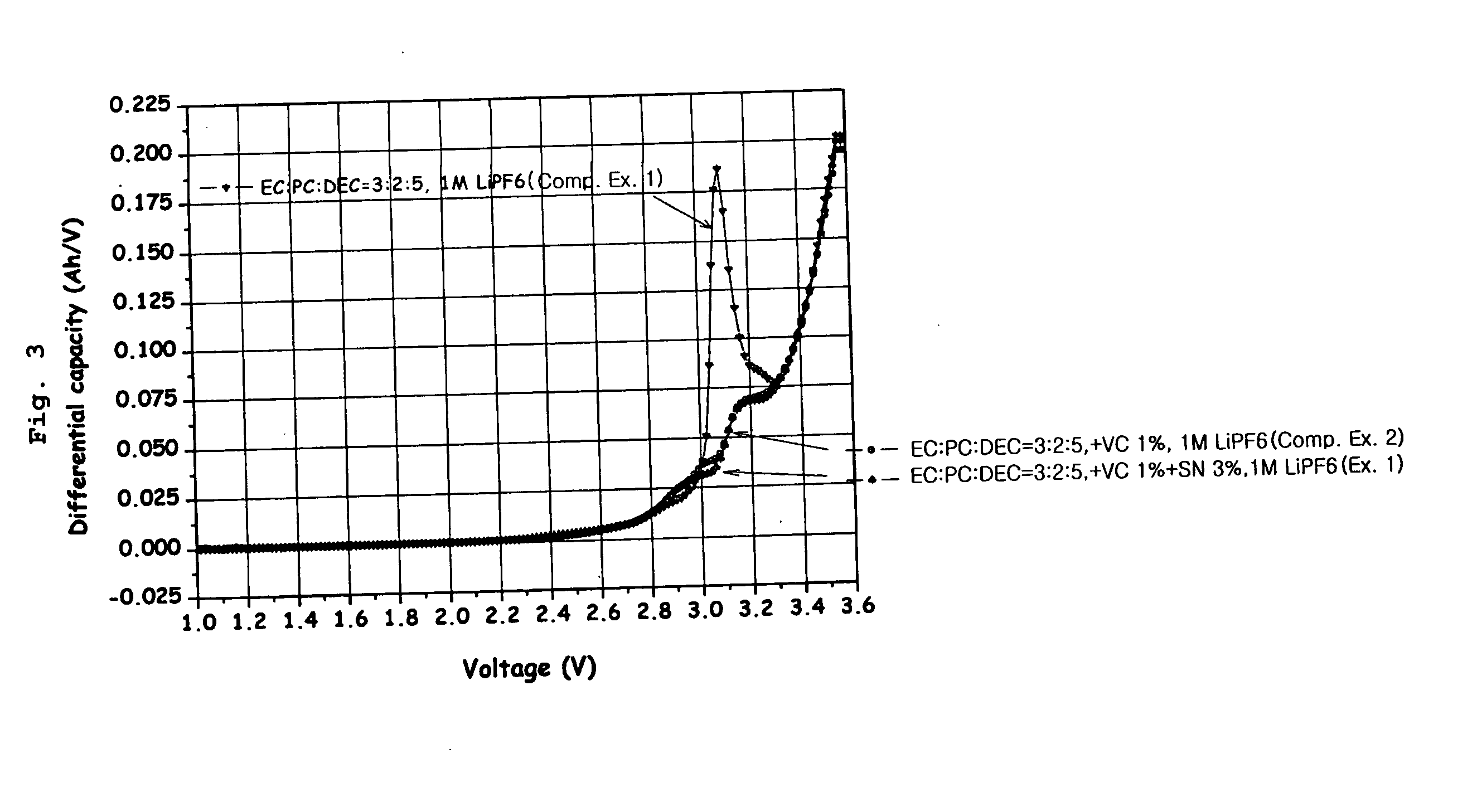Electrochemical device comprising aliphatic nitrile compound
a technology of aliphatic nitrile and nitrile, which is applied in the direction of non-aqueous electrolyte cells, cell components, sustainable manufacturing/processing, etc., to achieve the effects of preventing a reduction in the cycle life characteristics of batteries, preventing side reaction and gas generation, and smooth absorbing and releas
- Summary
- Abstract
- Description
- Claims
- Application Information
AI Technical Summary
Benefits of technology
Problems solved by technology
Method used
Image
Examples
example 1
[0071] A 1M LiPF6 solution having a composition of EC:PC:DEC=3:2:5 was used as an electrolyte solution. To this electrolyte solution, 1% by weight of vinylene carbonate (VC) and 3% by weight of succinonitrile (SN) were added. An anode was made of artificial graphite, and a cathode was made of LiCoO2. Then, using the prepared electrolyte solution, anode and cathode, a 323456-type lithium polymer battery was fabricated by a conventional method and packed with an aluminum-laminated packing material.
example 2
[0072] A 1M LiPF6 solution having a composition of EC:EMC=1:2 was used as an electrolyte solution. To this electrolyte solution, 1% by weight of VC and 3% by weight of succinonitrile were added. An anode was made of artificial graphite, and a cathode was made of LiCoO2. Then, using the prepared electrolyte solution, anode and cathode, a 423450-size prismatic lithium battery was fabricated by a conventional method.
examples 3-5
[0073] Lithium secondary batteries were fabricated in the same manner as in Example 1 except that 1% by weight of VC was added as an electrolyte additive for the enode but 3% by weight of each of sebaconitrile, dicyanopentane and dicyanohexane in place of succinonitrile was added as an electrolyte additive for the cathode.
PUM
| Property | Measurement | Unit |
|---|---|---|
| temperature | aaaaa | aaaaa |
| temperature | aaaaa | aaaaa |
| temperature | aaaaa | aaaaa |
Abstract
Description
Claims
Application Information
 Login to View More
Login to View More - R&D
- Intellectual Property
- Life Sciences
- Materials
- Tech Scout
- Unparalleled Data Quality
- Higher Quality Content
- 60% Fewer Hallucinations
Browse by: Latest US Patents, China's latest patents, Technical Efficacy Thesaurus, Application Domain, Technology Topic, Popular Technical Reports.
© 2025 PatSnap. All rights reserved.Legal|Privacy policy|Modern Slavery Act Transparency Statement|Sitemap|About US| Contact US: help@patsnap.com



